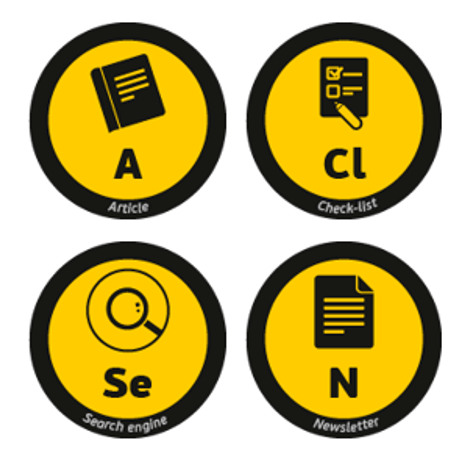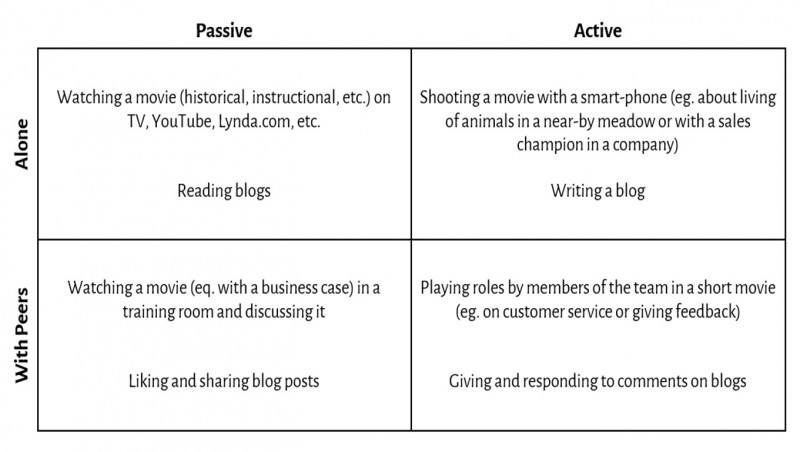How To Stimulate Active And Collaborative Learning In The eLearning Space
In my recent post I had been discussing ways of building flow in the eLearning course. There is some kind of contradiction when we think about this issue: As flow is a personal state of mind, it seems that it should be sought among learning activities that are being done on one’s own. On the other hand, peer-to-peer activities bring engagement and excitement, which seem necessary to reach the state of flow. Let us have a look at how we can create more engaging and collaborative ways of building competencies in the eLearning space.
Variety Of Learning Methods
There are hundreds of methods we could use to build one’s competence. Within the Learning Battle Cards project (see it here and here) we identified and described 100+ learning methods in the form of collectible cards.
Every single learning method has its strong specifics; namely, it is more likely to be used:
- In the alone or collaborative learning context.
- In the passive or active learning context.
4 Spaces Of Learning
So - there are 4 spaces of using individual learning methods. We could use them in the model of:
- Passive and alone learning.
- Passive and collaborative learning.
- Active and alone learning.
- Active and collaborative learning.
As instructional designers, we often associate a particular learning method with one of these spaces. Unfortunately, we usually associate them with the most primitive one, which, for eLearning space, used to be alone/passive learning.
Let's take a look at two examples of using movies and blogs in learning.
 In the eLearning space, the most common utilizations of movies are:
In the eLearning space, the most common utilizations of movies are:
- Putting a movie into the eLearning course for self-learning.
- Using a movie within the process, as the Coursera-like learning message.
- Building a knowledge pill based on a video message.
All of them are focusing on alone/passive space.
 When using blogs in the eLearning space, our first thoughts are to:
When using blogs in the eLearning space, our first thoughts are to:
- Ask eLearners to read indicated blogs.
- Ask eLearners to respond (i.e. write comments) to their trainer’s blog.
The first model of using blogs is, again, placed in the alone/passive space, while the second one, with a trainer’s proper management, could be a great example of active/collaborative space.
Let's take a look below to find some inspiration on using these two learning methods in all learning spaces:
What Can We Do?
We should take into consideration that almost every learning method could be used in various learning spaces. In the learning (also eLearning) process we can, for example: 
- Ask learners to read an article, but we can also ask them to write it.
- Provide learners a check-list as a performance support tool, but we can also ask them to create the check-list themselves and email it to the trainer for verification or share it with their colleagues.
- Recommend learners to use a search engine during a scavenger hunt task, but we can also ask them to create a team and prepare such a task with a list of curated websites to consider while doing it.
- Provide learners with a newsletter, but we can also ask them to organize themselves, create a new one about a certain topic, and share it with the other learners.
There are many possibilities - let's not limit ourselves to the most basic ones, which are located in the top-left corner of the above graph (alone/passive space): These basic options have a risk, as they are considered boring by learners.
Questions To Ask
While designing the learning process, we take into consideration various learning methods. While taking them into account, we should ask ourselves:
- How can I use this method for passive learning (learner as a receiver of the message / training routine)?
- How can I use this method for active learning (learner as a creator of the message / training routine)?
- How can I use this method for individual learning (message / training routine consumed or created by a single person)?
- How can I use this method for collaborative learning (message / training routine consumed or created by a team of people)?
All of these questions can create new instructional ideas. Of course, the forth one seems to be the most important in terms of addressing this article’s topic.


